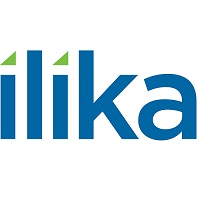Ilika plc (LSE:IKA) Chief Executive Officer Graeme Purdy caught up with DirectorsTalk for an exclusive interview to discuss their recent investor event and the next steps in technical development
Q1: We spoke a couple of months back and you were quite encouraging for the prospects for Ilika. You’ve recently hosted an investor day as well, could you describe this event and what was the feedback like on this event?
A1: I think it was quite a successful event, we were very well subscribed in terms of the number of investors who wished to partake in the event. Basically, we split it into two parts, in the morning we hoisted retail investor and in the afternoon, we had a separate session for institutional investors. The format was that we presented our half-yearly review, we gave a tour of our development labs and we then went down for a visit to the newly commission pilot line to show where we’re making our prototype batteries. I think the retail investors particularly appreciated the opportunity to access the team and ask questions that perhaps they wouldn’t normally get the opportunity to ask and I think the institutional investors appreciated the broader interaction across the team, talking to our scientists and also to members of the board who turned up for the event.
Q2: I take it this is not total rocket science, what you’re doing is understandable to most people, is that right?
A2: Well, I think that’s my job really, to try and translate some of the rather complex science into readily understandable concepts that people can relate to devices that are useful to them. We try and talk about the technology in terms of consumer electronics devices that people can be expected to buy in the future years.
Q3: Without wanting to be too colloquial, battery life is improving all the time. Presumably, with your developments, you’re really trying to go exponential improvements rather than just incremental that we’ve seen with normal technology?
A3: Yes, I think it’s a very exciting technology to be involved in. It’s perhaps the biggest revolution that lithium-ion batteries has been through since they were invented in the 1980’s, trying to remove that liquid electrolyte and replace it with a solid electrolyte to give the benefits that we’re targeting in terms of rapid charge rate and increased energy density so yes, most people can understand how it would affect their everyday lives.
Q4: You’ve talked about the internet being the initial target market for Ilika’s micro batteries. Is this market opportunity proving to live up to expectations so far?
A4: Yes, I was actually just reading an analyst report in Business Insider last week and I think most analysts are ramping up their growth expectations, one quote from this report is that they estimate by 2019, that there will be more than double the size of the combined smart phone, PC, tablet and connected car markets so you can see that in fact it’s shaping up to be a monster opportunity.
Q5: So it’s a bit like the gold-rush, you’re making the picks and shovels. In fact you’re everywhere, just beneath the surface?
A5: That’s right. We’re effectively offering and enabling technology that will support these device shipments that are fuelling the growth of the internet of things market.
Q6: What’s the next step in terms of the technical development? What’s the one we should be looking out for in terms of your battery technology?
A6: The thing we’re very deeply involved with at the moment is continuing with the site acceptance test, that is now substantially complete pending the delivery of some auxiliary items. We’ve already demonstrated that we can deposit a functioning CAFODE, which is one of the more critical elements of a battery, over an area that’s 20 times larger than what we achieved at our facility up here on the science park. Also, we’ve increased the deposition rate five-fold so effectively when you put those things together, we’ve got 100 times increase in the productivity of the pilot line relative to the development facility. So in the future, what we’re going to be doing is completing that commissioning of the pilot line and signing off the site acceptance test and then we’ll be using it to produce prototype batteries in the next few months that we will send out to our OEM partners so they can validate the batteries and the context of their integrated solutions that they’ll be selling to customer


